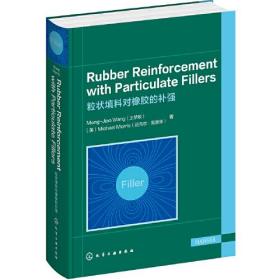
Rubber Reinforcement with Particulate Fillers(粒状填料对橡胶的补强)
正版品相完好,套书和多封面版本咨询客服后再下单
¥ 304.11 6.1折 ¥ 498 九品
仅1件
北京海淀
认证卖家担保交易快速发货售后保障
作者迈克尔·莫里斯 著;王梦蛟
出版社化学工业出版社
出版时间2021-04
版次1
装帧精装
上书时间2024-05-10
- 在售商品 暂无
- 平均发货时间 24小时
- 好评率 暂无
- 最新上架
商品详情
- 品相描述:九品
图书标准信息
- 作者 迈克尔·莫里斯 著;王梦蛟
- 出版社 化学工业出版社
- 出版时间 2021-04
- 版次 1
- ISBN 9787122383013
- 定价 498.00元
- 装帧 精装
- 开本 16开
- 纸张 胶版纸
- 页数 589页
- 字数 901千字
- 【内容简介】
-
本书是主要阐述粒状填料对橡胶补强的学术专著。填料对橡胶补强是橡胶工业中应用*为广泛的技术之一,99%以上的橡胶制品均含填料,而炭黑和二氧化硅(白炭黑)是常用的填料。目前填料的研究和开发已成为橡胶科技研究中*活跃的领域。
本书除简单介绍填料的制作过程外,着重详细说明填料的微观结构、基本性质及它们表征的原理和方法。在此基础上,本书从理论上阐述了填料在橡胶中的各种效应及这些效应是如何影响填充橡胶的加工性能、硫化胶在溶剂中的溶胀行为和物理机械性能,诸如静态及动态应力-应变特性及破坏特性,并从机理上论述了上述硫化胶性能与橡胶制品,尤其是轮胎的*终使用性能之间的关系。
本书对于橡胶行业的工程师和产品开发人员,以及从事橡胶研究的技术人员、教师和学生是很好的参考资料。 - 【作者简介】
-
王梦蛟,国家橡胶与轮胎工程技术研究中心任首席科学家,怡维怡橡胶研究院院长。美国卡博特公司前首席科学家。1984年,于法国国家科学研究中心(CNRS)获得博士学位。曽任职于原化工部北京橡胶工业研究设计院、美国阿克隆大学、德国橡胶工业研究院(DIK)、德国Degussa公司。
王梦蛟在橡胶行业耕耘至今已达56年。发表科学论文共140余篇,获得55个美国和中国的授权专利及其相应的24个PCT专利。曾参与了《Carbon Black:Science and Technology》等10本专业书的章节编写,主译了5本橡胶专业书籍。曾担任美国Rubber Chemistry and Technology杂志编委。
Michael Morris现任美国卡博特公司高级科学家。1985年于南安普顿大学获博士学位。先后任职于英国马来西亚橡胶生产者研究协会(MRPRA)、马来西亚橡胶研究院。1996年加入卡博特公司后,主要从事气相法白炭黑、炭黑在橡胶中的补强研究。
Morris博士已发表18篇论文,参与两本书的编写,获得12个美国授权专利和很多对应的PCT专利。
- 【目录】
-
Preface Ⅰ
About the Authors Ⅲ
1. Manufacture of Fillers 1
1.1 Manufacture of Carbon Black 3
1.1.1 Mechanisms of Carbon Black Formation 3
1.1.2 Manufacturing Process of Carbon Black 6
1.1.2.1 Oil-Furnace Process 6
1.1.2.2 The Thermal Black Process 10
1.1.2.3 Acetylene Black Process 11
1.1.2.4 Lampblack Process 11
1.1.2.5 Impingement (Channel, Roller) Black Process 12
1.1.2.6 Recycle Blacks 12
1.1.2.7 Surface Modification of Carbon Blacks 13
1.1.2.7.1 Attachments of the Aromatic Ring Nucleus to Carbon Black 13
1.1.2.7.2 Attachments to the Aromatic Ring Structure through Oxidized Groups 13
1.1.2.7.3 Metal Oxide Treatment 14
1.2 Manufacture of Silica 14
1.2.1 Mechanisms of Precipitated Silica Formation 15
1.2.2 Manufacturing Process of Precipitated Silica 16
1.2.3 Mechanisms of Fumed Silica Formation 18
1.2.4 Manufacture Process of Fumed Silica 18
References 19
2. Characterization of Fillers 22
2.1 Chemical Composition 23
2.1.1 Carbon Black 23
2.1.2 Silica 25
2.2 Micro-Structure of Fillers 27
2.2.1 Carbon Black 27
2.2.2 Silica 29
2.3 Filler Morphologies 29
2.3.1 Primary Particles-Surface Area 29
2.3.1.1 Transmission Electron Microscope (TEM) 30
2.3.1.2 Gas Phase Adsorptions 34
2.3.1.2.1 Total Surface Area Measured by Nitrogen Adsorption-BET/NSA 35
2.3.1.2.2 External Surface Area Measured by Nitrogen Adsorption-STSA 41
2.3.1.2.3 Micro-Pore Size Distribution Measured by Nitrogen Adsorption 46
2.3.1.3 Liquid Phase Adsorptions 51
2.3.1.3.1 Iodine Adsorptions 52
2.3.1.3.2 Adsorption of Large Molecules 56
2.3.2 Structure-Aggregate Size and Shape 61
2.3.2.1 Transmission Electron Microscopy 62
2.3.2.2 Disc Centrifuge Photosedimentometer 66
2.3.2.3 Void Volume Measurement 68
2.3.2.3.1 Oil Absorption 69
2.3.2.3.2 Compressed Volume 75
2.3.2.3.3 Mercury Porosimetry 80
2.3.3 Tinting Strength 83
2.4 Filler Surface Characteristics 92
2.4.1 Characterization of Surface Chemistry of Filler-Surface Groups 92
2.4.2 Characterization of Physical Chemistry of Filler Surface-Surface Energy 93
2.4.2.1 Contact Angle 98
2.4.2.1.1 Single Liquid Phase 98
2.4.2.1.2 Dual Liquid Phases 102
2.4.2.2 Heat of Immersion 106
2.4.2.3 Inverse Gas Chromatograph 111
2.4.2.3.1 Principle of Measuring Filler Surface Energy with IGC 111
2.4.2.3.2 Adsorption at Infinite Dilution 112
2.4.2.3.3 Adsorption at Finite Concentration 118
2.4.2.3.4 Surface Energy of the Fillers 123
2.4.2.3.5 Estimation of Rubber-Filler Interaction from Adsorption Energy of Elastomer Analogs 139
2.4.2.4 Bound Rubber Measurement 142
References 143
3. Effect of Fillers in Rubber 153
3.1 Hydrodynamic Effect ? Strain Amplification 153
3.2 Interfacial Interaction between Filler and Polymer 155
3.2.1 Bound Rubber 155
3.2.2 Rubber Shell 159
3.3 Occlusion of Rubber 161
3.4 Filler Agglomeration 163
3.4.1 Observations of Filler Agglomeration 163
3.4.2 Modes of Filler Agglomeration 164
3.4.3 Thermodynamics of Filler Agglomeration 167
3.4.4 Kinetics of Filler Agglomeration 170
References 173
4. Filler Dispersion 177
4.1 Basic Concept of Filler Dispersion 177
4.2 Parameters Influencing Filler Dispersion 179
4.3 Liquid Phase Mixing 187
References 191
5. Effect of Fillers on the Properties of Uncured Compounds 193
5.1 Bound Rubber 193
5.1.1 Significance of Bound Rubber 194
5.1.2 Measurement of Bound Rubber 195
5.1.3 Nature of Bound Rubber Attachment 197
5.1.4 Polymer Mobility in Bound Rubber 202
5.1.5 Polymer Effects on Bound Rubber 203
5.1.5.1 Molecular Weight Effects 203
5.1.5.2 Polymer Chemistry Effects 203
5.1.6 Effect of Filler on Bound Rubber 204
5.1.6.1 Surface Area and Structure 204
5.1.6.2 Specific Surface Activity of Carbon Blacks 206
5.1.6.3 Effect of Surface Characteristics on Bound Rubber 210
5.1.6.4 Carbon Black Surface Modification 211
5.1.6.5 Silica Surface Modification 215
5.1.7 Effect of Mixing Conditions on Bound Rubber 215
5.1.7.1 Temperature and Time of Mixing 216
5.1.7.2 Mixing Sequence Effect of Rubber Ingredients 218
5.1.7.2.1 Mixing Sequence of Oil and Other Additives 219
5.1.7.2.2 Mixing Sequence of Sulfur, Sulfur Donor, and Other Crosslinkers 221
5.1.7.2.3 Bound Rubber of Silica Compounds 222
5.1.7.3 Bound Rubber in Wet Masterbatches 223
5.1.7.4 Bound Rubber of Fumed Silica-Filled Silicone Rubber 225
5.2 Viscosity of Filled Compounds 227
5.2.1 Factors Influencing Viscosity of the Carbon Black-Filled Compounds 227
5.2.2 Master Curve of Viscosity vs. Effective Volume of Carbon Blacks 230
5.2.3 Viscosity of Silica Compounds 233
5.2.4 Viscosity Growth ? Storage Hardening 238
5.3 Die Swell and Surface Appearance of the Extrudate 241
5.3.1 Die Swell of Carbon Black Compounds 241
5.3.2 Die Swell of Silica Compounds 246
5.3.3 Extrudate Appearance 247
5.4 Green Strength 249
5.4.1 Effect of Polymers 249
5.4.2 Effect of Filler Properties 252
References 255
6. Effect of Fillers on the Properties of Vulcanizates 263
6.1 Swelling 263
6.2 Stress-Strain Behavior 271
6.2.1 Low Strain 271
6.2.2 Hardness 274
6.2.3 Medium and High Strains-The Strain Dependence of Modulus 275
6.3 Strain-Energy Loss-Stress-Softening Effect 279
6.3.1 Mechanisms of Stress-Softening Effect 282
6.3.1.1 Gum 282
6.3.1.2 Filled Vulcanizates 283
6.3.1.3 Recovery of Stress Softening 287
6.3.2 Effect of Fillers on Stress Softening 288
6.3.2.1 Carbon Blacks 288
6.3.2.1.1 Effect of Loading 288
6.3.2.1.2 Effect of Surface Area 289
6.3.2.1.3 Effect of Structure 290
6.3.2.2 Precipitated Silica 290
6.4 Fracture Properties 295
6.4.1 Crack Initiation 295
6.4.2 Tearing 296
6.4.2.1 State of Tearing 296
6.4.2.1.1 Effect of Filler 301
6.4.2.1.2 Effect of Polymer Crystallizability and Network Structure 302
6.4.2.2 Tearing Energy 306
6.4.2.2.1 Effect of Filler 306
6.4.2.2.2 Effect of Polymer Crystallizability and Network Structure 307
6.4.3 Tensile Strength and Elongation at Break 315
6.4.4 Fatigue 318
References 321
7. Effect of Fillers on the Dynamic Properties of Vulcanizates 329
7.1 Dynamic Properties of Vulcanizates 329
7.2 Dynamic Properties of Filled Vulcanizates 332
7.2.1 Strain Amplitude Dependence of Elastic Modulus of Filled Rubber 332
7.2.2 Strain Amplitude Dependence of Viscous Modulus of Filled Rubber 340
7.2.3 Strain Amplitude Dependence of Loss Tangent of Filled Rubber 343
7.2.4 Hysteresis Mechanisms of Filled Rubber Concerning Different Modes of Filler Agglomeration 348
7.2.5 Temperature Dependence of Dynamic Properties of Filled Vulcanizates 350
7.3 Dynamic Stress Softening Effect 354
7.3.1 Stress-Softening Effect of Filled Rubbers Measured with Mode 2 355
7.3.2 Effect of Temperature on Dynamic Stress-Softening 359
7.3.3 Effect of Frequency on Dynamic Stress-Softening 360
7.3.4 Stress-Softening Effect of Filled Rubbers Measured with Mode 3 362
7.3.5 Effect of Filler Characteristics on Dynamic Stress-Softening and Hysteresis 369
7.3.6 Dynamic Stress-Softening of Silica Compounds Produced by Liquid Phase Mixing 371
7.4 Time-Temperature Superposition of Dynamic Properties of Filled Vulcanizates 376
7.5 Heat Build-up 385
7.6 Resilience 387
References 389
8. Rubber Reinforcement Related to Tire Performance 394
8.1 Rolling Resistance 394
8.1.1 Mechanisms of Rolling Resistance-Relationship between Rolling Resistance and Hysteresis 394
8.1.2 Effect of Filler on Temperature Dependence of Dynamic Properties 396
8.1.2.1 Effect of Filler Loading 396
8.1.2.2 Effect of Filler Morphology 397
因字数限制,仅展示部分目录
点击展开
点击收起
— 没有更多了 —


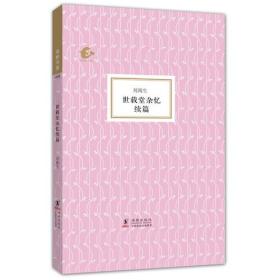

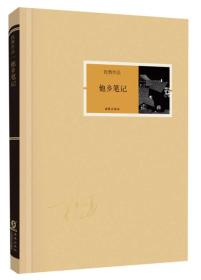


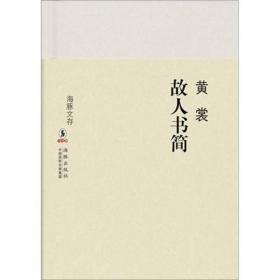
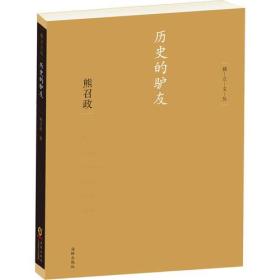



以下为对购买帮助不大的评价